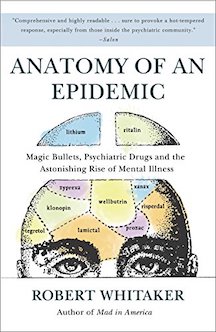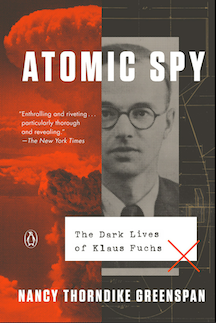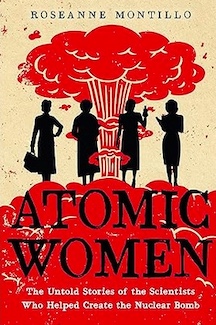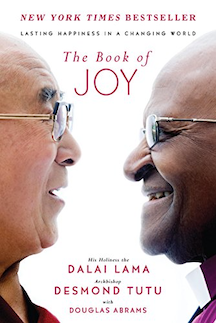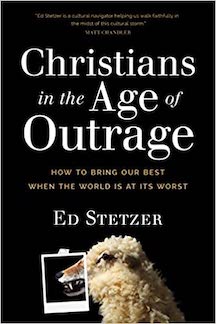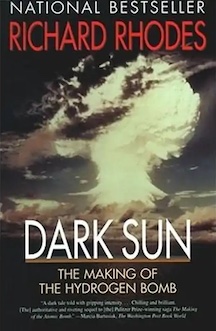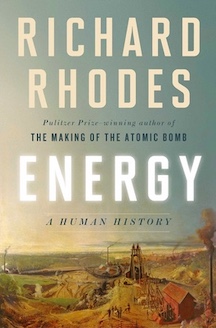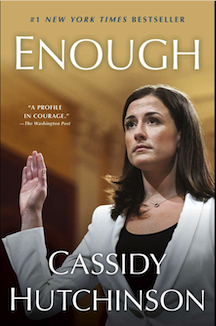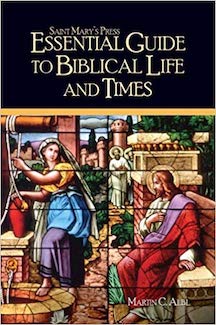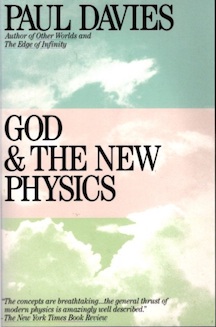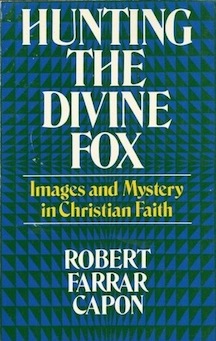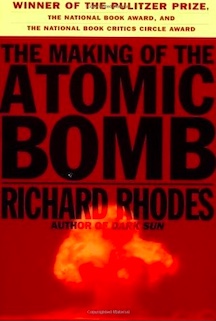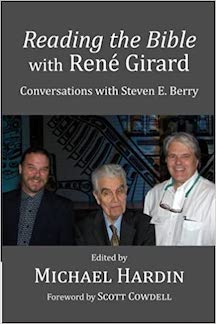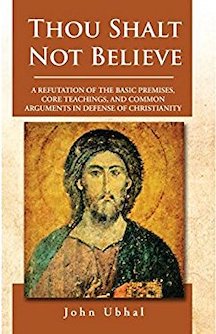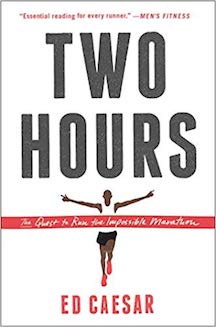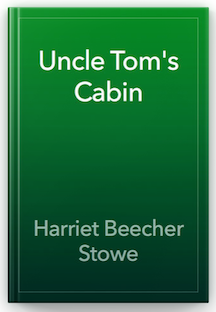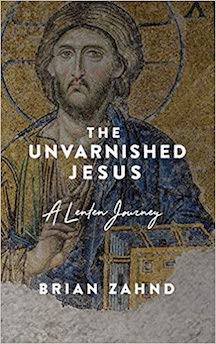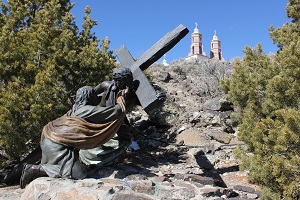- Reason, Faith, and Tradition: Explorations in Catholic Theology, Rev. Ed.
- Martin C. Albl
- Published by Anselm Academic, 2009, 2015
- ISBN 978-1-59982-632-5 (pbk.)
- 398 pages, including Glossary and Index
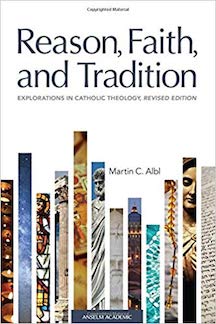
Overview:
Laying the Foundation
When I reviewed Martin Albl's Essential Guide to
Biblical Life and Times, he promptly sent me a copy of his
Reason, Faith, and Tradition. And no wonder: the Essential
Guide is his Hobbit to Tolkien's Lord of the Rings.
Although one may enjoy the Essential Guide over the longer work,
Reason, Faith, and Tradition is the more serious piece. It
tackles in sufficient detail the tough issues of a belief based on
first- and second-century texts whose adherents nevertheless claim its
absolute relevance today.
While I'm not a Catholic, and, based on the non-institutional trajectory of my faith, will not become one, I wish I had read this book when I was first introduced to the Gospel in high school. It would have provided me with a larger landscape against which to forge my faith, helping me avoid my early anti-intellectualism and its consequent intellectual dishonesty. It would also have kindled a better understanding of Roman Catholicism.
The book nicely outlines the ways a Christian-Catholic thinker might navigate through the some main currents of a post-Christian society. The level of detail, though, leaves quite a bit to be explored for those who are interested. For an extreme example, the first chapter raises and dismisses both Marx and Freud in a two-paragraph span (19-20)—although, of course, Albl knows he's making cursory introductory notes.
Frequently, the book outlines arguments, presents the beginnings of a Christian line of reasoning, and then moves on to a new point, leaving the reader the option of pursuing the abbreviated argument on his or her own—or continuing with the exposition. The book's length (just shy of 400 pages) and scope (apparently a survey textbook) require this approach, allowing interested readers to pursue lines of thinking through footnotes (often referencing online videos and documents).[1]
Though some arguments are compressed, the chapters themselves stand on their own as informed, concise expositions of Christian beliefs and thinking. Although the book is clearly Roman Catholic in focus (subtitled "Explorations in Catholic Theology"), Albl makes it clear that much of the discussion applies to all Christian thought. At times he distinguishes interpretations unique to (or common to) the Roman and Orthodox churches, as well as the Protestant communities.[2] Wherever possible, he avoids sectarianism, because "openness to recognizing truth in other traditions is a fundamental characteristic of Catholic theology" (25).[3][4] That said, the emphasis on faith and reason lends itself to Roman Catholicism, insofar as that tradition has closely followed in the footsteps of Thomas Aquinas.
As a foundation for his book, Albl uses a quote from the Summa Theologica: "Now the act of believing is an act of the intellect assenting to the divine truth at the command of the will moved by the grace of God" (ST 2-2.2.9, 38-39). Faith derives from the apprehension of divine truth through the intellect; hence, faith and reason. Reason alone is insufficient for a true knowledge of God because both the human will and the grace of God are required for a true understanding. Nevertheless, the act of believing is a mental act and cannot be divorced from rationality.
While reason is sufficient for demonstrating that God exists (Albl pays most attention to the First Cause argument), only revelation—utterances inspired by God—demonstrates what kind of God exists. Neither the physical world nor abstract reason can provide a clear understanding of the compassionate, communicative, relational aspects of God. Only scriptures (and writings based upon those scriptures) can provide those insights.
This thinking about divine truth, finally, arises within tradition, initially the Judaic tradition which maintained the scriptures and observations of the law, and later the Christian tradition, in which 13th century Aquinas followed the writers of the New Testament, "John Chrysostom (ca. 347-407 CE), Augustine (354-430 CE), John of Damascus (ca. 675-ca. 749 CE), and Anselm (ca. 1033-1109 CE) . . . " (49). Tradition provides an interpretive context with important checks and balances within which reason operates.
Meet Charles Darwin
~ to Overview ~
Working together, reason, faith, and tradition, these three pillars, provide the modern believer with the ability to confront modern critics and to reconcile the faith with scientific challenges. The pillars allow the development of what Albl calls the "hermeneutic of trust" (also known as the "hermeneutic of respect"). Using Paul Ricoeur to clarify this act of interpretation, Albl states, first, that the talking serpent in Genesis 3 must be recognized as a non-literal actor in a non-literal story. Thus the "first naivete" is abandoned in favor of reason. The "second naivete," however, re-examines the remaining elements of the story—those that are not self-contradictory—and takes from them a meaning that is both reasonable and unobtainable by the purely suspicious or skeptical reading (60).
Under sway of the second naivete, "The reader is now open to better hearing some of the fundamental claims of the text: that God created the entire universe (it is not the result of blind chance), that God created all things good, that humans are created in God's image and have been entrusted by God to care for his creation (Gen 1:26-28), that humans are free and can misuse this freedom to turn away from their Creator (Gen 3)" (61). Thus the second naivete brings the reader to a more significant and coherent understanding of the Bible.[5]
This hermeneutic of trust attempts to throw out the irrational bathwater while saving the (Christian) baby.[6] The baby, as we all know, has been at the center of evolutionary controversy for about a century and a half. Exercising a hermeneutic of trust that moves beyond the first naivete to the second naivete, Albl (and the tradition he represents) is amenable to scientific discoveries that force a re-consideration of texts once taken literally, including the creation stories in Genesis 1‑3.
For those who understand the Bible as divinely influenced, Francis Collins provides a bridge to evolution. Uniquely, this Evangelical Christian was the head of the Human Genome Project, which successfully mapped all the genes in the humane genome. As a result, Collins studied first hand the discoveries uncovered by the scientists on the project, discoveries that showed such a close correspondence between the genes of humans and animals that the inference of a common ancestor became inescapable. Though Albl does not refer to him, Austin Farrar's remark that God makes his creation make itself is perfectly applicable to this discussion.
While modern Catholicism remains receptive to the theory of evolution (unlike fundamentalist traditions of Christianity), Albl emphasizes that evolution should not be confused with the atheistic evolutionism promoted by Richard Dawkins and others (93). Yes, evolution may explain the biological diversity of this world, but, no, it cannot account for spiritual and intellectual elements that humans possess, elements having little in common with the animal world.[7]
Knowing the Unknowable
~ to Overview ~
God reveals himself two ways: through nature (general revelation whose facts are available to everyone) and through history (special revelation whose facts are conveyed symbolically, through particular languages at particular times). As Albl writes, "Accepting revelation, then, is not a matter of blind faith. In general revelation, human reason is able to recognize a Creator and Designer behind the universe. In special revelation, people accept or believe revelation because they have reasons to trust the authority of the revealer" (101).
Natural revelation is self-validating (appreciable through the senses). Sense perceptions, such as the vastness of the night skies, coupled with reason (that the whole is greater than the part), allow humans to approximate an understanding of the magnitude of God (for example). While nature allows (but does not compel) humans to infer an intelligent and powerful creator, it presents a limited vision of God. First, it cannot convey what Christians consider the most important characteristics of God, particularly God's heart of love. Second, it provides contradictory data, including natural and social disasters that suggest either a twisted or absent commanding force behind nature.
While explanations can be offered concerning this problem of evil (free will, the effects of sin on natural processes, the benefits achieved through suffering), they clearly are not conclusive (hence the perpetual debates). A more sure way is provided through historical or special revelation.
How one comes to accept special revelation is a matter for much of the rest of the book, where it deals with theories of inspiration and historicity. But a preliminary concern is the ability of a truly infinite being to communicate with finite beings. For this, attention is paid to the role of analogy in special revelation. It is a commonplace that we can only know God through analogy, something Aquinas made clear in his writings. What this means, exactly, deserves attention. While God may be figured as a father or, less commonly, as a mother, the analogy (one hopes) is only partial. One must sort out the obviously fallible, human experiences of one's parent as one appreciates the caring, responsible, and, frankly, powerful aspects of the figure.
Even those who recognize the dependence on metaphors in discussing God do not follow Aquinas sufficiently, perhaps. "Aquinas also notes that the analogy between God and his creature moves in only one direction: 'a creature can be spoken of as in some sort like God; but not that God is like a creature' (ST 1.4.3 ad.4)" (112). But do not most of us do the opposite? Do not we find a father or mother or song or setting that we love and think, "God is like this?" or "Heaven is like this?"
If we were to think, instead, that my father is like God in his thoughtfulness or this place is peaceful, as heaven must be—if we were to think in that direction, we would have far fewer misleading images of God and heaven. We would have fewer images of God as either our aging, gray-haired father or as the Godfather (which is how Mary Daly sees the Christian God). We would, similarly, prevent heaven from being confused with a travel brochure. Sunday school curricula, sermons, and Christian artwork would be more accurate, cautious, and, I suggest, original.
Anthropomorphism (thinking about God in terms usually applied to humans) is necessary in order to envisage God as a relational being, rather than as an abstract energy field vibrating brightly through our being (a very metaphorical statement in itself). But we do well to recognize the metaphorical nature of our thinking. While Albl quotes Kallistos Ware, cautioning against carelessly switching metaphors, one should, nevertheless, exercise the freedom to play down the role of metaphors that, as a result of one's cultural specificity, do an injustice to considerations of God.[8]
When we turn to the doctrine of the Trinity, we find ourselves waist-deep in metaphors. Prior to the assignment of personalities and roles to the godhead, the arithmetic term itself is metaphorical: coming from the Latin "triad" the term "trinity" presupposes a correspondence between human counting and divine being. The metaphor assumes that identity can be enumerated for the infinite that exists beyond time and space. What can it mean to enumerate without sequence (time) or order (space)? While the correspondence may be valid, it seems important to recognize that, referring back to the directionality prescribed by Aquinas, we maintain not that "God is like three" but that in some way "three is like God."
Albl's discussion starts downstream from this point. While the doctrine is never explicitly stated in the scriptures, it is nevertheless adopted by the majority of Christian churches and communities. Once the incarnation of God, through the spirit, in the person of Jesus is admitted (and this is in the scriptures), the doctrine unfolds haltingly yet logically. Remarkably, the first-century Jewish philosopher Philo intuited something close to the father-son relationship (131).
While I do not question the doctrine of the Trinity, I am perhaps like many readers who do not find it critical to my thinking. The quote from Thomas Jefferson that Albl uses to introduce his discussion gains surprising traction, in spite of its cynicism: "'It is too late in the day for men of sincerity to pretend they believe in the Platonic mysticisms that three are one, and one is three; and yet the one is not three, and the three are not one'" (121).
Because the doctrine's paradoxical structure pushes the doctrine beyond the imaginative grasp of many of us, it is particularly useful that Albl quotes C. S. Lewis' functional description:
An ordinary simple Christian kneels down to say his prayers. He is trying to get in touch with God. But if he is a Christian he knows that what is prompting him to pray is also God: God, so to speak, inside him [the Holy Spirit]. But he also knows that all his real knowledge of God comes through Christ, the Man who was God—that Christ is standing beside him, helping him to pray, praying for him. You see what is happening. God is the thing to which he is praying—the goal he is trying to reach. God is also the thing inside him which is pushing him on—the motive power. God is also the road or bridge along which he is being pushed to the goal. So that the whole threefold life of the three-personal Being is actually going on in that ordinary little bedroom where an ordinary man is saying his prayers. (137)
Far from being a creedal expression of the Trinity, Lewis' functional description has the advantage of drawing our focus to the usefulness of any doctrine: to increase our knowledge of the philosophically unknowable. If this had been the focus throughout the ages, perhaps there would have been fewer martyrdoms.[9]
Chapter 7, "Human Nature and Human Destiny" ends the first half of the book, approximately. Another trinity, the body, soul, and spirit (with more emphasis on the body-soul) leads to a discussion of the body and how, though imperfect, it is not inherently evil. It, too, will some day be resurrected, not as physical body but as a spiritual one that, like Jesus' resurrected body, still possesses substance.
The truly unpopular topics of original sin and hell are dealt with calmly, with qualifications that smooth some of the edges on those topics which have been leveraged in the past in ways that appear to obscure the "love" of the God of love. Both Christian and Catholic voices suggest the possibility of some kind of ultimate reconciliation for all, allowing the reader to "own" a gospel without feeling compelled to entertain the image of an eternal hell populated with most of humankind (175).
The chapter concludes with some specifically Catholic teachings, purgatory and prayer for the dead, both of which are treated in a way that is amenable to my non-Catholic thinking.
"Your Dusty, Historical Jesus"
~ to Overview ~
Years ago, when Robert Hamerton-Kelly was participating in the Colloquium on Violence and Religion, he recalled one of his conversations with members of the Jesus Seminar. Very roughly paraphrased, he told one of them to "take your dusty, historical Jesus and I will take my resurrected Christ."
Perhaps in recalling that, I'm doing an injustice to both the Jesus Seminar and Hamerton-Kelly. The anecdote, however, captures the postmodern dilemma that confronts Christians.
An entire counter-narrative now exists that, until the 20th century, few struggled with: the scriptures, like any other texts, are cultural objects, and, being so, can be understood better by examining the material conditions through which they were created. The various genres guide interpretation, and the historical origins of the text help determine (or complicate) the authorship of the texts. While historical criticism does not necessitate skepticism, the result has often been that the scriptures' authorship, historical veracity, and inspiration—in short, their authority—require interrogation, reformulation and, if one so concludes, renunciation.
Usually, though, renunciation is not necessary. Rather, the story of Jesus is atomized into sub-stories, any of which may be more or less mythological than the others, allowing the believer to consciously pick and choose. Not only that, but non-canonical (i.e. apocryphal) texts are often proffered as reliable texts that were initially discounted because they were viewed as subversive by the ecclesiastical hegemony.[10]
In the wake of this narrative, questioning the traditional canon becomes more likely than believing it. In the end, there is much less to believe when Jesus is demythologized to the point of being an above-average sage who only symbolically rose from the dead.
That, my reader, is the dusty Jesus. If the earliest dedicated disciples of Christ were considered to be of "little faith" by their teacher, where does the modern historical-critical method leave an aspiring disciple?
Thus the modern believer is confronted by the dilemma of remaining intellectually honest at the expense of one's faith or of willfully ignoring facts. What constitutes the "facts" of course is what determines whether or not the dilemma is actual. Four chapters of Reason, Faith, and Tradition tackle this apparent dilemma, along with ancillary issues.
In short, the book embraces the historical-critical tradition to the extent it remains compatible with the non-negotiable truths of the Catholic Church. In addition to reasons of intellectual integrity, it does so philosophically: the Catholic tradition has always recognized the incarnation of Christ as a historical event, and if Christ wore the weakness of human flesh, why could not the scriptures, then, coexist within the weakness of textuality?
Similarly, if "the Word of God" refers not just to scriptures but to Christ himself, speaking to and through the church, why protect or even idolize the written text? The Hebrew-Christian writings are not the Koran/Qur'an, nor need they be. The playwright has walked out on stage, making the written word subordinate to the divine presence. Finally, if many of the scriptures were authored over time through various contributions of the community, in what way can this collective authorship threaten the Church that relies on tradition as a living vehicle that preserves the truth of the scriptures?
Being inspired, the Bible is inerrant, primarily in spiritual and moral matters but also, under the limits of historical criticism, in historical matters.[11] Albl notes the importance of generic differences, how in particular the books of Job and Jonas distance themselves from presenting historical narratives (197-199). One need not imagine a man-swallowing fish in order to dine at Albl's table.
He goes on to note an illuminating (and happily trivial) example of scripture both contradicting and correcting itself:
1. 1 Samuel reports that David killed the Philistine 'Goliath of Gath' whose javeline shaft 'was like a weaver's beam' (1 Sam 17:4015, esp. 17:7).
2. A later account, however, states that a man named Elhanan killed Goliath: 'There was another battle with the Philistines, in Gob, and Elhanan, son of / Jair from Bethlehem, killed Goliath of Gath, whose spear shaft was like a weaver's beam' (2 Sam 21:19)
3. The author of 1 Chronicles, who used the books of Samuel as a source, saw the discrepancy and tried to smooth it out: 'There was another battle with the Philistines, and Elhanan, the son of Jair, slew Lahmi, the brother of Goliath of Gath, whose spear shaft was like a weaver's beam' (1 Chron 20:5). (205-206)
Whether 1 Chronicles muddies the water further or sets the record straight is probably beyond our ability to determine, but two things emerge from the discussion: there are factual errors in the Bible and they do not threaten the message of the gospels. By contrast, every gospel celebrates Christ as ministering and teaching, crucified, and risen, facts that, if controverted, would have significant consequences on one's faith.
Albl traces the historical-critical method, beginning with the First Quest (for the historical Jesus), which had its roots in the Enlightenment, with Hermann Samuel Reimarus (1694-1768) often being credited as the pioneer. Interest died down until the Second Quest (1950s), led "by biblical scholars such as Bultmann's students Ernst Käsemann and Günther Bornkamm. . . . A third phase, sometimes call the 'Third Quest,' began in the 1970s and continues to this day" (245).
Throughout the variety of speculations concerning the relation between the early disciples of Jesus and the orthodox accounts (primarily the four Gospels), Albl claims, "Nevertheless, a strong case can be made that all four Gospels draw directly on apostolic eyewitnesses and tradition" (251). The liberal John Dominic Crossan (from the Jesus Seminar) is pitted in the Third Quest against the more conservative N. T. Wright. The aptly named "N. T. Wright" makes the obvious but important point that many historical arguments are built on a series of shaky hypotheses:
because there is not textual evidence for earlier versions, they [liberal textual critics] must hypothesize that there were earlier 'layers' of both the Gospel of Thomas and Q that included only the non-apocalyptic wisdom sayings of Jesus. It is especially questionable to hypothesize layers in Q, as Q itself is a hypothetical source. (258)
The ensuing discussion in Albl's book focuses on seeing the New Testament and early church within the context of "Second Temple" Judaism as well as first-century Palestinian life with its intersections with Greco-Roman culture. The picture that emerges is that the climate in which Jesus taught had a "strong sense that the eschatological kingdom of God would soon be established on Earth" (269). Forgiveness would be assumed to apply to a community instead of individuals. And that some kind of kingdom would be established (a mixture of the transcendental one established by the son of man and the immediate kingdom being established by Jesus the Messiah, healer and deliverer).
In short, this type of historicizing validates more-less traditional readings of the New Testament.
Reason, Faith, and Tradition makes a case that Jesus foresaw his death, burial, and resurrection (rather than those elements being added by church authorities later on). Most importantly the book emphasizes that the early disciples introduced a concept of "resurrection" that was new, fitting neither the purely spiritual resurrection of some first-century Jews (such as Philo) or a more ghostly continuation of life espoused by Greco-Roman culture. "The second-century orthodox Christian tradition is also remarkably unified in its insistence that Jesus was raised in a transformed body, ruling out the possibility that the appearances were regarded as visions" (285).
Much to the astonishment of the philosophical mind contemporary to Jesus—as well as the astonishment of early disciples—the resurrection was to be the physical resurrection of a spiritual body (whatever that means, one thing being clear that the body is not left in the tomb, another thing being clear that this body is capable of going through walls). Like it or not, this is the Christian concept of resurrection. Jesus was the first-born of a new order of humans that, in the end of time, will be resurrected and will reign in the universe.
Christology & Ecclesiology
~ to Overview ~
The groundwork has now been laid to give the logic of the Catholic Church's view of Christ (Christology) and of itself (Ecclesiology).
"Christology" introduces the incarnation and continues the discussion of the trinity. It is the concept of the trinity that prevents our misunderstanding of the relationship of the son to the father. It prevents us from committing our thinking to a definition that would logically fail in the long run—such as if the only knowable nature of Christ were human, preventing us from participating in a true knowledge of the father (296-305). Among other advantages, this discussion highlights the point that it is no simple task to define the god-man in a way that does not, later, take its toll on either his humanity or his divinity.
Next Albl turns to the topic of atonement, using C.S. Lewis as a springboard. Lewis' point is that it is more important for believers to trust that Christ's death is efficacious than to conceptualize how it works.[12] From that point Albl quickly moves to the Roman Catholic view (Anselm's) that the atonement provided a substitution (Christ for humanity) that works because Christ, being perfect, can make the acceptable payment to a perfect, and perfectly offended God. (Yes, I'm anthropomorphizing with "offended" but see no way around the discussion of substitution without attributing to God's sense of justice an offense of some sort.)
By this point, I should admit that I stand clearly on Lewis' side of the question: the theory of how is not nearly as important as the confidence that Christ's death saves us. In short, I'd rather have no theory than the substitutionary one.
The reason for casting aspersions on the theory of substitution is provided by Albl's text where he writes, "The history of religions reveals how deeply embedded the need for atonement is within human religion" (307). The history of religions is, as Albl knows, paved with scapegoats and sacrificial victims whose deaths are justified to appease various gods, but whose fates are recognizably part and parcel with human violence. Perhaps we could call a moratorium on atonement theories, pausing to consider Jesus's insistence that his father was perfect, giving sunshine and rainfall to the just and unjust alike.
Once the book gets beyond assigning a motive to the father for allowing his son's death… the sailing is smoother: Jesus becomes a representative of the human race, laying down his life in love for humanity (which I interpret as his standing in front of a derailed locomotive to protect a village rather than climbing upon an alter in order to appease a god).
The only quarrel I have—and it's not with Albl, nor only with the Catholic theology—is with the entire tradition of sacrificial thinking that attributes to God the need for revenge that humans find themselves requiring. The problem is summarized by Hamerton-Kelly's "double transference": first the community blames the victim for making the community kill it, and then the community assigns to the victim praise for redeeming the community.[13]
In "Ecclesiology" Albl raises the five main objections non-Catholics may have for resisting its claims, which I will paraphrase:
- too organized (unlike, for example, a Quaker meeting),
- too hierarchical,
- too arrogant, insisting on being necessary for salvation,
- too ritualistic, and
- too confident in the pope's inerrancy.
The organic unity of the Catholic Church provides a set of answers to these objections: alienation from other humans is a root sin, and so it is important that redemption involve interpersonal relations, which in turn require some kind of organization. Accordingly, Christ instituted a leadership to take his place on earth (including his saying to Peter, which means rock in Greek, "on this rock I will build my church"). The leadership both brings believers together and has the authority (derived from apostolic succession) to bless the Eucharist, turning it into the real body of Christ. As a result, only those who attend a Catholic Mass will have the fullest experience of divine fellowship (which is a claim that sounds arrogant, although it is consistent to the logic of the Catholic Church).
The pope's inerrancy is limited to speaking "in his office as 'supreme pastor and teacher of all Christians,' not as a private person" (332). Albl lists two examples of "popes using their gift of infallibility to define a teaching": (1) Pope Pius IX's definition (1854) of Jesus' mother having been conceived immaculately in order to explain how she could have a sinless son, and (2) Pope Pius XII's definition (1950) of the Assumption of Mary into heaven with the result that she never experienced an earthly death.
While both instances of inerrancy suggest that a pope is never considered infallible in his (or her, if the day arrives) commerce with the pressures and difficulties of daily life, the two instances that Albl provides would give any Protestant pause, both sounding like arguments of infinite regress that require a prior set of miracles to explain a later set.
A primary strength (to the extent it is accepted) of the Catholic Church is its claim of apostolic succession from the disciple Peter down to the present day Pope Francis. This is a strength of course because to the extent one accepts the argument, the Catholic Church is endowed with an elegant lineage that, on the surface, suggests an unwavering authority.
Albl writes, "As an example, Irenaeus gives the names of the line of bishops of Rome from the time of the apostles Peter and Paul until his own day [approx. 180 CE] (Against the Heresies 3.3.3)" (326). Upon looking up that reference, I find that, just as Albl writes, both Peter and Paul are invoked as authorities (something my superficial understanding of Catholicism never prepared me for—the inclusion of Paul in the succession). There is a strong argument, with plenty of names (Linus, Anacletus, and Clement to name the first three),[14] to suggest a continuity that comes close to Peter and Paul.[15]
The lineage is offered primarily to claim that the churches that the Church at Rome recognize (such as the Church of Corinth) agree on the tenets of the faith (including the supremacy of the God of Genesis, ruling out other, gnostic gods). In conclusion, Irenaeus states, "In this order, and by this succession, the ecclesiastical tradition from the apostles, and the preaching of the truth, have come down to us. And this is most abundant proof that there is one and the same vivifying faith, which has been preserved in the Church from the apostles until now, and handed down in truth."
Irenaeus sees the value of "the Scrip-rural proof furnished by those apostles who did also write the Gospel" (Chapter V), as well as the value of tradition. Nevertheless, he takes a remarkable stand in favor of the protection the Holy Spirit provides those less closely connected to Rome:
Those who, in the absence of written documents, have believed this faith, are barbarians, so far as regards our language; but as regards doctrine, manner, and tenor of life, they are, because of faith, very wise indeed; and they do please God, ordering their conversation in all righteousness, chastity, and wisdom. If any one were to preach to these men the inventions of the heretics, speaking to them in their own language, they would at once stop their ears, and flee as far off as possible, not enduring even to listen to the blasphemous address. (Chapter IV, Section 2)
This passage has no direct bearing on the argument concerning the apostolic succession. It does, however, demonstrate a kind of latitude and trust in God to extend protection beyond clean institutional and discursive boundaries. I appreciate both the reference to Irenaeus and Albl's characteristic reliability in making it.
The Catholic Church & the World
~ to Overview ~
Albl concludes his book with a consideration of how the Catholic Church does and does not fit into our contemporary pluralistic world. For Protestants a mutual divide with Catholics exists as a result of the differing beliefs concerning the role of apostolic succession and the mystical dimension of the church offices, perhaps especially including the Lord's Supper. Catholics view the host as the Real Presence of Christ; nearly all Protestants consider it a symbolic presence. The Anglican community (whose nomenclature places it among other Protestants) may come closer institutionally to the Catholic Church, but is not recognized "within the line of apostolic succession" (346). "Despite these differences, the Catholic Church remains committed to an ongoing relationship and dialogue with Protestant and evangelical communities" (342).
In the case with the Orthodox Churches (which I assume includes Greek, Coptic and Russian orthodox churches), the differences are less marked. That is why Catholics bestow the title "church" upon Eastern churches, unlike the title "community" that is used for Protestant institutions. Finally, in "1965, Pope Paul VI and the Orthodox Patriarch of Constantinople Athenagoras declared that both the Catholic and Orthodox Church 'regret and remove both from memory and from the midst of the Church the sentences of excommunication' (Joint Catholic-Orthodox Declaration) that marked the split between Eastern and Western Christianity in 1054" (347).
Non-christians are, of course, less privy to the grace of Christ but, since Vatican II, are not entirely exempt of its influence. While merits of the monotheistic traditions (Judaism, Islam) lend themselves as easy links on one theological level, Hinduism and Buddhism are also not without merit. However, none of these traditions is unproblematic from the Catholic and Christian view of the indispensability of Christ.
Ongoing dialogue with outsiders is urged by the Catholic Church, as is dialogue with the secular society that is subject to many of the social issues that concern the Catholic Church. And it is with this that the book ends with a reference to Martin Luther King Jr., noting that "As Martin Luther King observed, the church is neither the master nor the servant of the state but its conscience, guide and critic. The Catholic Church [Albl continues] with its experience of 2,000 years of tradition and its trust in the harmony of faith and human reason, is in a good position to offer that guidance" (360).
____Footnotes____
[1]The author is of course aware of this trade-off between being thorough and providing a survey. For example, in Chapter 2 he writes: "First, a caution: the following description of traditions closed to the transcendent is simplified. Intellectual traditions are complex, so the labels used—rationalism, materialism, and determinism—are general. Few individual thinkers, for example, are purely rationalistic, materialistic, or deterministic" (27).
[2]Albl explains the terminological distinction between a "church" (Roman and Orthodox) and a "community" (Protestant "churches"): "Because they 'have not preserved the apostolic succession or the valid celebration of the Eucharist,' the communities with their roots in the Reformation are 'not Churches in the proper sense of the word' but rather 'ecclesial Communities.' Such terminology is not meant to denigrate the Protestant or evangelical communions but to protect the strongly mystical and sacramental Catholic understanding of the Church" (342, citing www.vatican.va [www.vatican.va/roman_curia/congregations/cfaith/documents/rc_con_cfaith_doc_20070629_commento-responsa_en.html]).
[3]Reason, Faith, and Tradition exemplifies the non-sectarian impulse that it attributes to Catholic thinking. Its reliance on Paul Ricoeur, C.S. Lewis, and Francis Collins illustrates this, as does the fact that the book concludes with a reference to Martin Luther King Jr.
[4]Later in the book, Albl provides an example of a doctrinal reconciliation between Catholics and Lutherans, writing, "In October 1999, the Lutheran World Federation and the Catholic Church issued a Joint Declaration on the Doctrine of Justification. The World Methodist Conference later officially adopted this same document" (167). In essence, the organizations came to agreement that "'By grace alone, in faith in Christ's saving work and not because of any merit on our part, we are accepted by God and receive the Holy Spirit, who renews our hearts while equipping and calling us to good work.'" In short, one of the deepest divides arising from the Reformation has been worked through by these organizations. No small feat.
[5]The Bible for Catholics consists of the Old Testament books that were included in the Septuagint, the early Greek translation of the Hebrew scriptures. Thus, the Catholic Bible includes several Old Testament books absent from the Protestant Bible, including 1st and 2nd Maccabees, Baruch, Tobit, Judith, The Wisdom of Solomon, and Sirach (Ecclesiasticus). The Bible for Protestants consists of only the Old Testament books found in the "official canon of Judiasm rather than the Septuagint" (from www.christianbiblereference.org). The New Testaments contain identical books.
[6]If a believer cannot appreciate the argument of the book up to this point, he or she may be better off adhering to a form of fideism, a subjective assurance that one knows the truth by revelation alone, and that one's understanding needs no rational correctives. While fideism may work very well for some—and, yes, risk a complete break in communication with both believing and unbelieving thinkers—it is not the hermeneutic of the Christian-Catholic tradition about which Albl writes.
[7]During the discussion of evolution, Albl (similarly to Collins) discounts Intelligent Design, first as a science because it does not provide a means of testable hypotheses, second as a sufficient refutation of biological evolution because it falls into the category of a "God in the gaps" theory (90). Its success depends on the immaturity of scientific knowledge and could easily be undermined as additional discoveries are made, just as the geocentric understanding of the universe was displaced by additional proofs of the solar system being heliocentric (Copernicus and Gallileo).
However (and I speak as a true novice in evolutionary matters), it seems Albl resorts to a God-in-the-gaps argument when he seeks to refute Dawkins' evolutionism. Albl writes, "evolution still cannot adequately answer two specific puzzles.
1. The origin of life itself.
2. The development of specifically human characteristics such as self-consciousness" (93).
The wording itself, "still cannot," belies the reliance on a "gap" in scientific knowledge.
[8]Ware writes, "We cannot prove arguments why this should be so, yet it remains a fact of our Christian experience that God has set his seal upon certain symbols and not upon others . . . Like the symbols in myth, literature, and art, our religious symbols reach deep into the hidden roots of our being, and cannot be altered without momentous consequences. If, for example, we were to start saying, 'Our Mother who art in heaven,' instead of 'Our Father,' we should not merely be adjusting an incidental piece of imagery, but replacing Christianity with a new kind of religion. A Mother Goddess is not the Lord of the Christian Church" (115).
I am not convinced, however, that this is the end of the discussion since fathers, lords, mothers, gods, goddesses, and "Christian" itself are words with a good deal of baggage, increasingly as the years go by. Baggage—that is, accumulated meaning—in itself is neutral. Some is worth keeping and some is antithetical to a faith in a loving, strong, sensitive, just, and intelligent God.
[9]The classic martyrdom over Trinitarian issues being Michael Servetus, who fell out among both the Catholics and the Protestants: "After being condemned by Catholic authorities in France, he fled to Calvinist Geneva where he was burnt at the stake for heresy by order of the city's governing council" (Wikipedia, "Michael Servetus").
[10]For an example of an apocryphal gospel, Albl quotes the Gospel of Thomas:
Simon Peter said to them: "Let Mary go away from us, for women are not worthy of life." Jesus said, "Lo, I shall lead her, so that I may make her a male, that she too may become a living spirit resembling you males. For every woman who makes herself a male will enter the kingdom of heaven." (Saying no. 114) (259)
Against this, Paul the apostle shines: "There is neither Jew nor Gentile, neither slave nor free, nor is there male and female, for you are all one in Christ Jesus" (Galatians 3:28, NIV).
[11]While it appears Albl is arguing in favor of "limited inerrancy" over "strict inerrancy" at one point (196), I am not sure where he or the Catholic tradition ultimately stands. Soon, he states that a 2014 Catholic document urges that the concept "should not be understood to mean that biblical truth 'concerns only those parts of the Sacred Book that are necessary for faith and morality, to the exclusion of other parts'" (197, emphasis mine). This statement seems to urge a strict inerrancy, one that encompasses more than moral and spiritual facts. However, the following paragraph restricts "'biblical truth to divine revelation which concerns God himself and the salvation of the human race'"—suggesting once again a limited inerrancy. I believe the chapter (Chapter 8) as a whole allows readers to assume that in essential matters the Bible is inerrant but that a strict inerrancy is not required for genuine faith.
[12]While Albl refers to Lewis but does not quote him, I'll take the liberty of quoting a passage from "The Perfect Penitent" in Mere Christianity:
Now before I became a Christian I was under the impression that the first thing Christians had to believe was one particular theory as to what the point of this dying was. According to that theory God wanted to punish men for having deserted and joined the Great Rebel, but Christ volunteered to be punished instead, and so God let us off. Now I admit that even this theory does not seem to me quite so immoral and so silly as it used to; but that is not the point I want to make. What I came to see later on was that neither this theory nor any other is Christianity. The central Christian belief is that Christ's death has somehow put us right with God and given us a fresh start. Theories as to how it did this are another matter. A good many different theories have been held as to how it works; what all Christians are agreed on is that it does work. (Quoted on the web site "I Have an Inkling")
[13]Robert G. Hamerton-Kelly, The Gospel and the Sacred: Poetics of Violence in Mark, 1994, Augsburg Fortress, p. 7.
[14]See "Chapter III. - A Refutation of the Heretics, from the Fact That, in the Various Churches, a Perpetual Succession of Bishops Was Kept Up" (Irenaeus of Lyons, Book III, www.earlychristianwritings.com/text/irenaeus-book3.html).
[15]I write "close" because the Church at Rome is now the seat of authority for Ireneus, whereas Jerusalem and Antioch share center stage throughout most of the Book of Acts. Nothing like, "and on this rock I will build my church," emerges from Ireneus, not that it was intended to. But for skeptics, that is the kind of scene that would ignite the imagination . . . .
reviewed: 2019/03/01 | last updated: 2019/03/01


